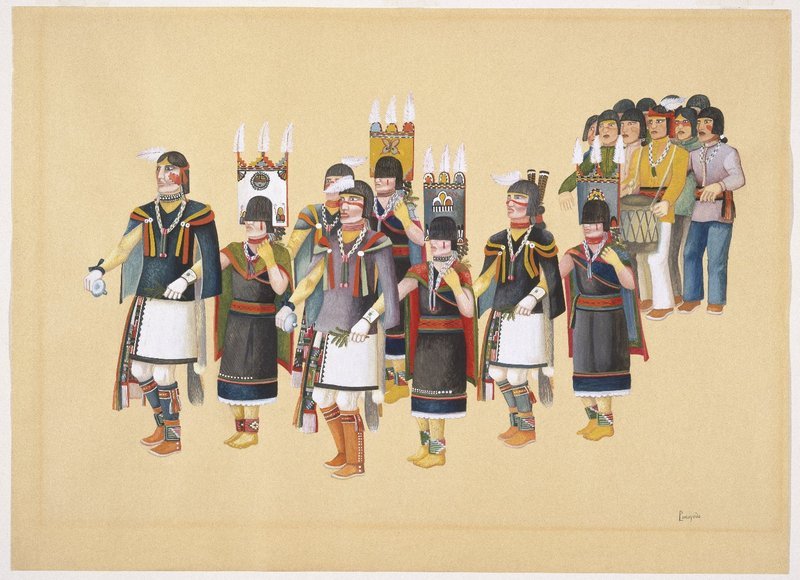Hopi Corn Dance Item Number: 40.90 from the Brooklyn Museum

Description
Also known as Lewis Lomay.(1913-1996) Native American watercolor painting, depicting scenes from everyday life and ceremonial dances, arose in the 1920s, stimulated by growing interest among white patrons. Drawing from a long tradition of painted hides, pottery, and wall murals, artists incorporated native painting styles with the European-derived medium of watercolor to create a new Native American art form. At the heart of this movement were various self-taught artists from the southwestern United States, particularly from Hopi and Pueblo cultures. In 1930 the Brooklyn Museum was one of the first museums in the country to feature an exhibition of watercolors by Native American painters from the Southwest. Here Louis Lomayesva (b. 1913) depicts the dancers and drummers of the Hopi Corn Dance. Representing life , corn is the most important symbol for the Hopi. Like many of his contemporary Native American watercolor artists watercolorists, Lomayesva omitted the background in his images , thereby emphasizing the figures while adding a timeless quality. At the same time, his paintings mirror reality, as seen in the fine details of the woven designs on the dancers' shawls and belts.
Label
This painting depicts the performers of the Hopi Corn Dance. Louis Lomayesva omitted the background in his images, thereby emphasizing the figures while adding a timeless quality. His paintings nevertheless mirror reality, as seen here in the fine details of the woven designs on the dancers’ shawls and belts.
Lomayesva was one of several artists who incorporated traditional Native painting styles from hides, pottery, and murals with the European-derived medium of watercolor to create a new Native American art form.
Credit Line
Dick S. Ramsay Fund
Item History
- Made between 1930 and 1939
What
- Name
- Hopi Corn Dance
- Identification Number
- 40.90
- Type of Item
- dance and corn
- Material
- watercolor on paper
- Overall
- length 15.9375 in, width 21.9375 in
Where
- Holding Institution
- Brooklyn Museum
When
- Creation Date
- between 1930 and 1939
Other
- Location
- American Identities: A New Look, American Art Galleries, 5th Floor, The United States on the World Stage, 1865–1930, 5th Floor
- Classification
- Painting